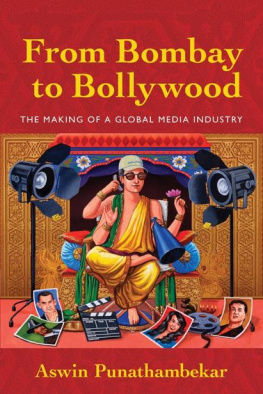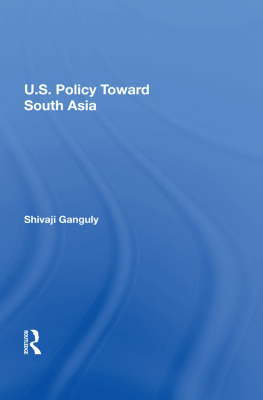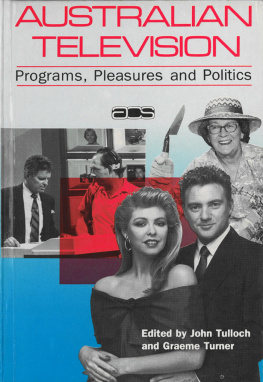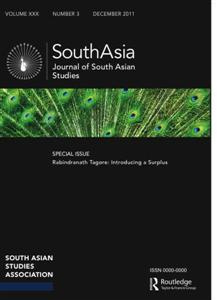
Television at Large in South Asia
This book explores the empirical and theoretical significance of understanding television as a dynamic technology, a creative industry, and a vibrant cultural form that is at large in South Asia. Bringing together prominent scholars who have shaped television studies in South Asia, as well as emerging scholars who address new topics, this book decisively positions television as a key site in the study of South Asian history and culture. In doing so, it also positions the study of television in South Asia and the South Asian diaspora as crucial in the rethinking of global television history, and opens up new directions for the future of television studies. This volume will be essential reading for scholars and teachers of media and communication studies, media history, anthropology, and sociology, besides being of great interest to policymakers and media professionals.
This book was originally published as a special issue of South Asian History and Culture.
Aswin Punathambekar is an Associate Professor in the Department of Communication Studies and faculty affiliate at the Center for South Asian Studies at the University of Michigan-Ann Arbor, USA. He is the author of From Bombay to Bollywood: The Making of a Global Media Industry (2013) and co-editor of Global Bollywood (2008).
Shanti Kumar is an Associate Professor in the Department of Radio-TV-Film and a faculty affiliate in the Department of Asian Studies, the Center for Asian-American Studies and the South Asia Institute at the University of Texas-Austin, USA. He is the author of Gandhi Meets Primetime: Globalization and Nationalism in Indian Television (2006) and co-editor of Planet TV (2003).
South Asian History and Culture
David Washbrook University of Cambridge, UK
Boria Majumdar University of Central Lancashire, UK
Sharmistha Gooptu South Asia Research Foundation, India
Nalin Mehta La Trobe University, Melbourne
This series offers a forum that will provide an integrated perspective on the field at large. It brings together research on South Asia in the humanities and social sciences, and provides scholars with a platform covering, but not restricted to, their particular fields of interest and specialization. Such an approach is critical to any expanding field of study, for the development of more informed and broader perspectives, and of more overarching theoretical conceptions.
The series achieves a multidisciplinary forum for the study of South Asia under the aegis of established disciplines (e.g. history, politics, gender studies) combined with more recent fields (e.g. sport studies, sexuality studies). A focus is also to make available to a broader readership new research on film, media, photography, medicine and the environment, which have to date remained more specialized fields within South Asian studies.
A significant concern for the series is to focus across the whole of the region known as South Asia, and not simply on India, as most South Asia forums inevitably tend to do. We are most conscious of this gap in South Asian studies and work to bring into focus more scholarship on and from Pakistan, Bangladesh, Sri Lanka, Nepal and other parts of South Asia.
Health, Culture and Religion in South Asia
Critical Perspectives
Edited by Assa Doron and Alex Broom
Minority Nationalisms in South Asia
Edited by Tanweer Fazal
Gujarat Beyond Gandhi
Identity, Society and Conflict
Edited by Nalin Mehta and Mona Mehta
South Asian Transnationalisms
Cultural Exchange in the Twentieth Century
Edited by Babli Sinha
Religious Cultures in Early Modern India
New Perspectives
Edited by Rosalind OHanlon and David Washbrook
Gender and Masculinities
New Perspectives
Edited by Assa Doron and Alex Broom
Television At Large in South Asia
Edited by Aswin Punathambekar and Shanti Kumar
Television At Large in South Asia
Edited by
Aswin Punathambekar and Shanti Kumar
First published 2014
by Routledge
2 Park Square, Milton Park, Abingdon, Oxon, OX14 4RN, UK
and by Routledge
711 Third Avenue, New York, NY 10017, USA
Routledge is an imprint of the Taylor & Francis Group, an informa business
2014 Taylor & Francis
All rights reserved. No part of this book may be reprinted or reproduced or utilised in any form or by any electronic, mechanical, or other means, now known or hereafter invented, including photocopying and recording, or in any information storage or retrieval system, without permission in writing from the publishers.
Trademark notice: Product or corporate names may be trademarks or registered trademarks, and are used only for identification and explanation without intent to infringe.
British Library Cataloguing in Publication Data
A catalogue record for this book is available from the British Library
ISBN 13: 978-0-415-72546-0
Typeset in Times New Roman
by Taylor & Francis Books
Publishers Note
The publisher accepts responsibility for any inconsistencies that may have arisen during the conversion of this book from journal articles to book chapters, namely the possible inclusion of journal terminology.
Disclaimer
Every effort has been made to contact copyright holders for their permission to reprint material in this book. The publishers would be grateful to hear from any copyright holder who is not here acknowledged and will undertake to rectify any errors or omissions in future editions of this book.
Contents
Citation Information
Aswin Punathambekar and Shanti Kumar
Sahana Udupa and Paula Chakravartty
Mobina Hashmi
Sangeet Kumar
Madhavi Mallapragada
Sreya Mitra
John Hutnyk
Kalyani Chadha and Anandam Kavoori
Purnima Mankekar
Nalin Mehta
Radhika Parameswaran
Abhijit Roy
The chapters in this book were originally published in South Asian History and Culture, volume 3, issue 4 (October 2012). When citing this material, please use the original page numbering for each article, as follows:
Introduction
Television at large
Aswin Punathambekar and Shanti Kumar
South Asian History and Culture, volume 3, issue 4 (October 2012)
pp. 483490
Chapter 1
Changing with The Times of India (Bangalore): remaking a post-political media field
Sahana Udupa and Paula Chakravartty
South Asian History and Culture, volume 3, issue 4 (October 2012)
pp. 491510
Chapter 2
At the limits of discourse: political talk in drag on Late Night Show with Begum Nawazish Ali
Mobina Hashmi
South Asian History and Culture, volume 3, issue 4 (October 2012)
pp. 511531
Chapter 3
The fatal snare of proximity: live television, new media and the witnessing of Mumbai attacks
Sangeet Kumar
South Asian History and Culture, volume 3, issue 4 (October 2012)
pp. 532548
Chapter 4









